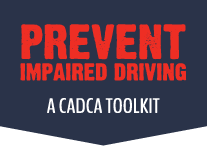STRATEGY 7 – Modify & Change Policies
Formal change in written procedures, by-laws, proclamations, rules or laws with written documentation and/or voting procedures (e.g., public policy actions at the federal, state and local levels, law enforcement procedures and practices, rules and practices that guide governmental and community organizations, business policies and practices). Effective policies must be based on known effects in behavior and sensitive to the prevalence of problem behavior and related policies in the state or jurisdiction.
Additional interventions involve court laws for DWI/DUI offenders, training and setting establishment policies with employees of alcohol-serving businesses, and clarifying operating standards for alcohol-serving businesses upon which zoning permits are granted.
Some important policies are currently national law, and have already had a significant impact on impaired driving rates and public awareness:
- 0.08% Blood Alcohol Concentration (BAC) Laws (“Per se laws”)
- Maintaining Current Minimum Legal Drinking Age (MLDA) Laws
There are additionally numerous best practices that have been shown to prevent impaired driving. Implementing these policies and supporting their maintenance locally will help your coalition address impaired driving. The Community Preventive Services Task Force (CPSTF) recommends:
State:
- Implementing school-based instructional programs to inform students of the risk of riding with alcohol-impaired drivers.
Municipal:
- Policies Setting up School-based instructional programs.
- Using regulatory authority (e.g., through licensing and zoning) to limit alcohol outlet density.
- the use of ignition interlocks for people convicted of alcohol-impaired driving. Evidence demonstrates that interlocks reduce re-arrest rates while the interlocks are installed.
- Increasing the unit price of alcohol by raising taxes to reduce excessive alcohol consumption and related harms. Public health effects are expected to be proportional to the size of the tax increase.
- Holding dram shops (including bars and restaurants that serve alcohol on-site) liable.
- Policies setting up publicized sobriety checkpoint programs.
Maintaining limits on hours of alcohol sale in on-premises settings.

